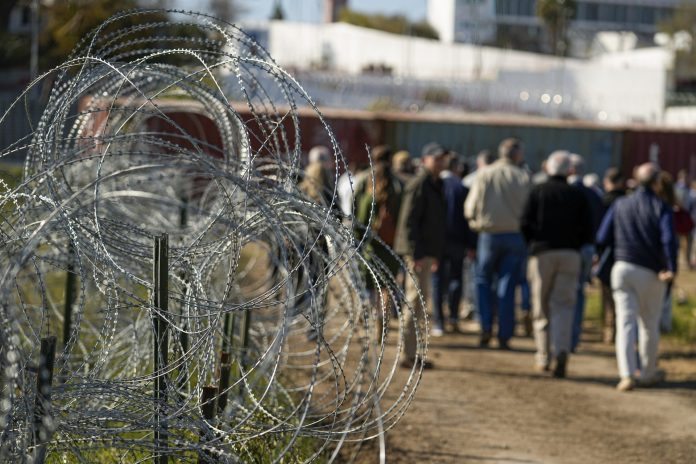
|
Only have a minute? Listen instead
Getting your Trinity Audio player ready...
|
The U.S. Supreme Court on Monday gave the federal government permission to cut or remove razor wire and other obstructions from the U.S. border along the Rio Grande. The greater issue of whether the state has the authority to place such obstructions on the international border, however, remain unresolved.
That resolution needs to come as soon as possible.
Indeed, Texas Attorney General Ken Paxton immediately declared Monday that “this fight is not over,” and Gov. Greg Abbott’s office announced that “this case is ongoing, and Governor Abbott will continue fighting to defend Texas’ property and its constitutional authority to secure the border.”
As legal experts have long asserted, however, the international is not state property, nor does it have any authority to enforce federal law. Many people hope the Supreme Court can finally settle the debate over state encroachment on federal authority, and put an end to the rash of actions and lawsuits by Texas and other conservative-run states that test limits on state authority regarding federal law.
The court’s one-line ruling voided an injunction placed by the Fifth Circuit Court of Appeals after the state sued the federal government in December when Border Patrol agents began cutting through coils of razor wire that prevented them from accessing the river, which they are charged with patrolling.
The Joe Biden administration and others who oppose the state’s potentially lethal border blockade are celebrating Monday’s order as a victory. However, they surely hoped the court would take the opportunity to settle the question of state jurisdiction at our national border once and for all. Instead, the case goes back to the Fifth Circuit for that determination, and it is scheduled to hear arguments on that issue on Feb. 7.
While Monday’s action might hint at how the Supreme Court justices might be leaning on the jurisdictional matter, few expect the regional court, which is called the most conservative in the country, to take that hint and rule in favor of the federal government. The case surely will return to the high court, which could have saved a lot of time, and perhaps some migrants’ lives, with a definitive ruling this week.
The jurisdictional issue was thought to have been settled long ago, as the court has asserted federal authority in countless border and immigration cases, some of them similar to those that it will consider in the near future. The new conservative majority, however, and their willingness to rescind decisions made by their predecessors, has emboldened conservative state officials into testing the new group with a rash of new actions regarding immigration as well as voting rights, discrimination and other civil rights issues.
Monday’s order was made by a narrow 5-4 majority. Conservative Chief Justice John Roberts and Associate Justice Amy Coney Barrett joined the three liberal justices in the majority statement. It is hoped, however, that a majority of the current court will still respect precedent, the Constitution and humanity, and issue final rulings that discourage challenges such as Abbott’s border blockade in the future.
RELATED READING:
Supreme Court rules for Biden administration in Texas border dispute



